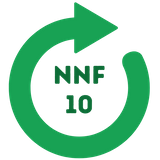Small Caps Dominate AUM Trends in January 2025
The latest data on January 2025 Assets Under Management (AUM) has been released by MPHI, and an interesting trend has emerged. Small caps have been leading the AUM growth charts for the past couple of years, but now, there has been a decline of about ₹1,487 crore in AUM. This drop is largely due to the fall in small-cap prices rather than actual outflows. Despite this decline, the net AUM addition in small caps over the last month still stands at ₹439 crore.

Investors Continue to Add to Small Caps
Even though small caps have seen a correction, investors are still adding funds to this segment, while other categories like large-cap and mid-cap funds have not seen similar inflows. In fact, some categories have reported net outflows. This suggests that investors may be trying to average out their positions in small caps, especially if they entered at higher levels and have now seen a decline in their portfolios.
Is Averaging a Good Strategy?
Averaging out a falling stock can be risky, but when it comes to structured investments like mutual funds or smallcases, additional allocation can be a more strategic move. When investors put more money into a falling market through funds, they are essentially trusting the fund manager to shift the portfolio towards better-performing stocks, defensive plays, or even increase cash holdings if necessary. Unlike averaging a single stock, which can be dangerous if the stock itself is weak, allocating more to a diversified fund means giving the fund manager flexibility to navigate market conditions.
Concerns About Overcrowding in Small Caps
One possible risk is that too much money is flowing into small caps at a time when there may not be enough opportunities. If fund inflows continue but the underlying stocks do not have enough liquidity or growth potential, it could create challenges for fund managers. This has been a topic of concern recently, as an imbalanced flow of funds into small caps may lead to higher volatility or difficulty in deploying capital efficiently.
A Healthy Sign, But a Balanced Approach is Needed
Overall, the fact that money is still flowing into equity markets is a positive sign. If inflows had dried up completely, markets could have been significantly lower by now. However, a more balanced AUM distribution across different market segments would help create a more stable investment environment. Excessive concentration in small caps may not be ideal, and it would be healthier to see more inflows across flexi-cap, large-cap, and mid-cap funds as well.
WeekendInvesting launches – PortfolioMomentum Report
Momentum Score: See what percentage of your portfolio is in high vs. low momentum stocks, giving you a snapshot of its performance and health.
Weightage Skew: Discover if certain stocks are dominating your portfolio, affecting its performance and risk balance.
Why it matters
Weak momentum stocks can limit your gains, while high momentum stocks improve capital allocation, enhancing your chances of superior performance.
Disclaimers and disclosures : https://tinyurl.com/2763eyaz










